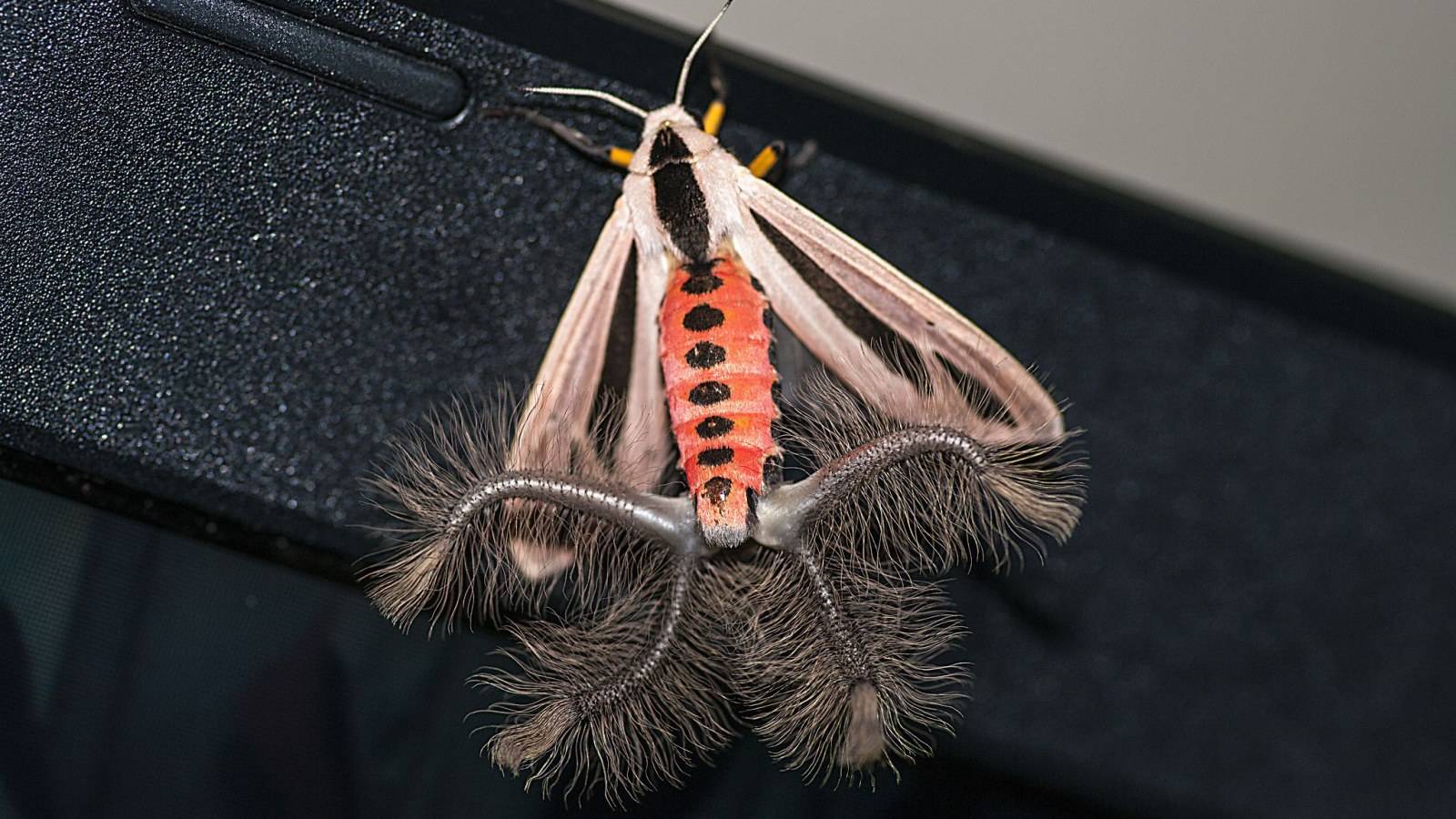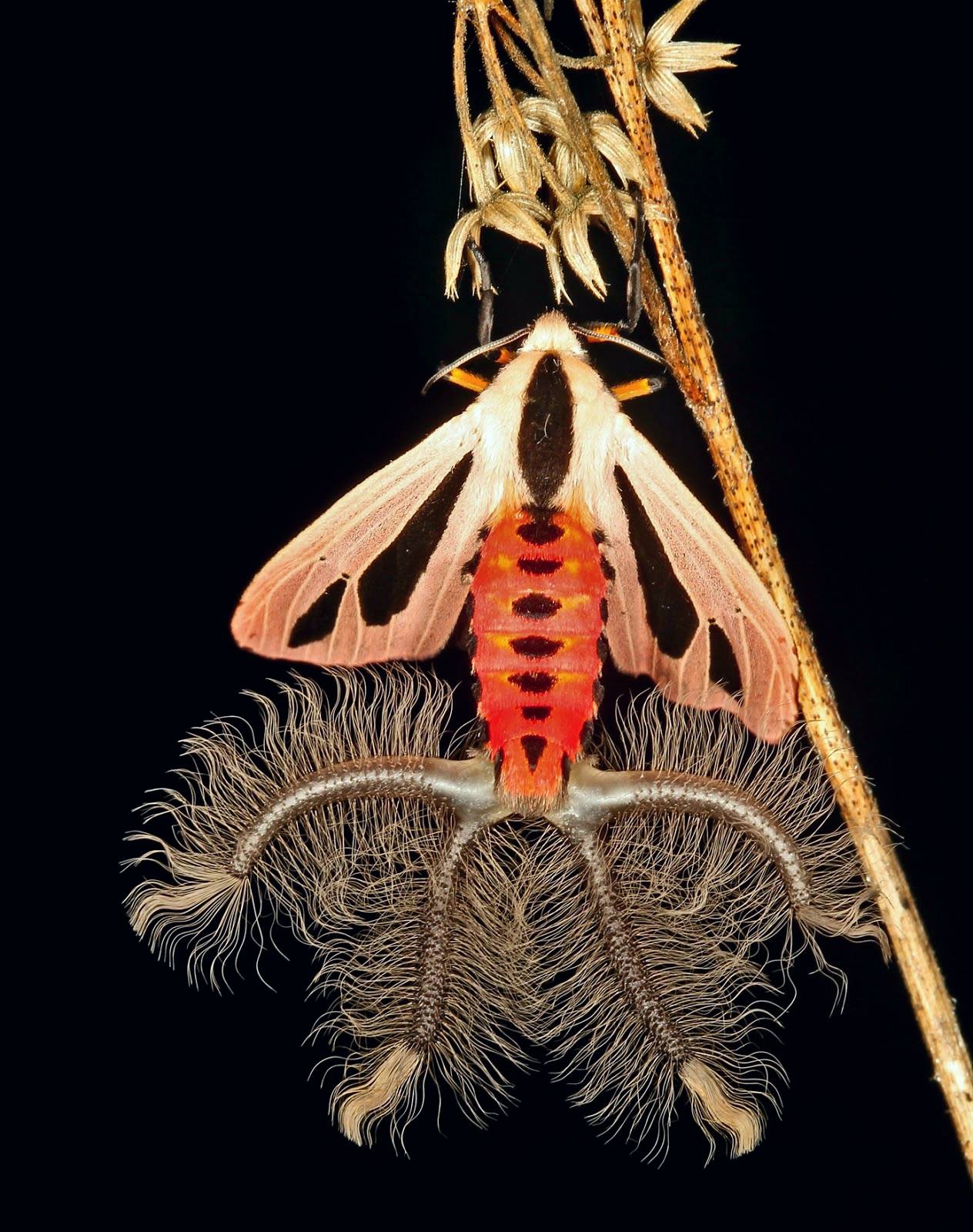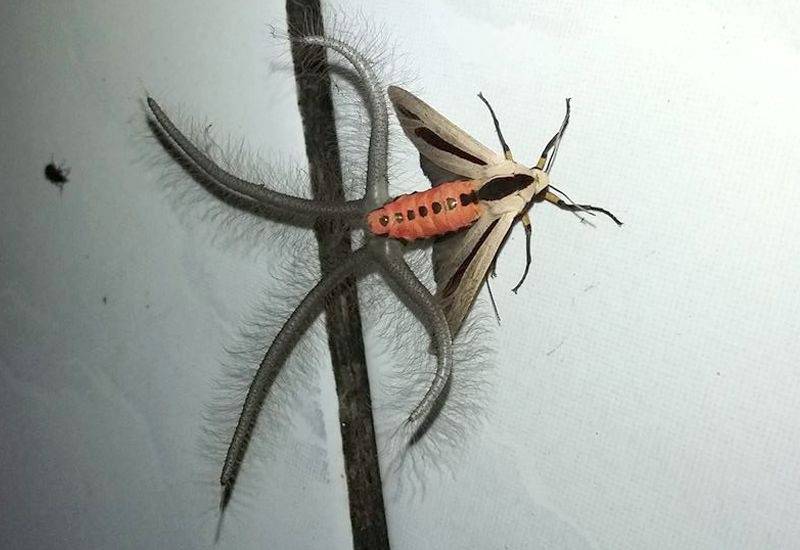Bec Crew is a Sydney-based science communicator with a love for weird and wonderful animals. From strange behaviours and special adaptations to newly discovered species and the researchers who find them, her topics celebrate how alien yet relatable so many of the creatures that live amongst us can be.
Antennae minutely ciliated in both sexes. Head, thorax and fore wing pale pinkish ochreous. Palpi and legs smoky black, the femora yellow; a broad dorsal band on thorax; abdomen crimson above, with dorsal and lateral series of black spots. Fore wing with a broad black fascia below median nervure; two black spots at end of cell, and a broad streak beyond the lower angle. Hind wing pale or dark fuscous; some specimens with a sub-marginal series of black spots. The variety continuatus has additional black streaks on the fore wing below the costa, in cell, above inner margin, and in the marginal interspaces, but all the intergrades occur. Larva black, sparsely clothes with long hairs; head marked with white; a yellow dorsal line with a series of orange spots on it; prolegs pale.

Adult males secrete the pheromone hydroxydanaidal in order to attract mates. The amount produced, and the size of the coremata which produce it, are however dependent on the diet that the moth experienced as a caterpillar. If the larval diet contained pyrrolizidine alkaloids, then the coremata become large and the male will release up to 400 micrograms (0.4 milligrams) of Hydroxydanaidal, but if it does not, then the coremata do not grow large and no scent is produced.[7]







